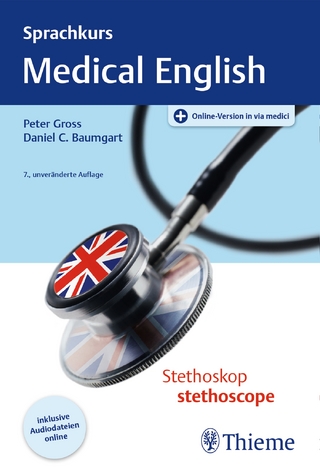Linguistic Salvage – Isubu and Wovea (Bantu A231)
Phytonyms and Zoonyms. Including a Grammatical Sketch. With a foreword by Evelyn Fogwe Chibaka
Seiten
2020
Köppe, R (Verlag)
978-3-89645-770-7 (ISBN)
Köppe, R (Verlag)
978-3-89645-770-7 (ISBN)
- Keine Verlagsinformationen verfügbar
- Artikel merken
Die vorliegende Studie dokumentiert das sprachliche- und Volkswissen über Pflanzen und Tiere auf Isubu und Wovea, zwei bedrohten Bantu-Sprachen aus Kamerun aus der Zone A (Klassifierung nach Guthrie als Bantu-Zone A.231). Die Studie bedient sich ethnobotanischer, ethnosoziologischer und anthropologisch linguistischer Herangehensweisen, um lokale Systematiken, Funktionen und sprachliche Implikationen der Pflanzen und Tiere zu untersuchen.
Zu Beginn wird die Verortung und linguistische Klassifikation stellt der zwei Gruppen dargestellt, sowie ihre Geschichte und ihr sozio-ökonomisches Leben. Im ersten Kapitel folgt die Grammatik der beiden Sprachen, die Nomen-Klassen und die Struktur in Kapitel zwei. Kapitel vier und fünf beinhalten die Daten der Namensforschung, Pflanzen- und Tiernamen, Beschreibung und linguistische Analyse dieser einbegriffen. Im abschließenden Kapitel wird der Schwerpunkt der Arbeit zusammen mit ihrem Wert rekapituliert, was durch Empfehlungen an verschiedenen Interessengruppen unterstrichen wird.
Die Isubu sind multilingual, d.h. Code-Switching und Code-Mixing sind eine alltäglich angewandte Sprachpraxis. Isubu wird in Bimbia, in der Küstengegend der Süd-West-Region Kameruns gesprochen.
Die Sprache gehört zu einem Kontinuum der eng verwandten Bantu-Sprachen (Benue-Kongo der Niger-Kordofanisch-Gruppe), die auch Douala, Mopke und Wovia/Wovea einschließt. Aus diesem Grund weisen Isubu und Wovea strukturelle Merkmale wie Nomen-Klassen und Konkordanz-Systeme auf.
Die Bevölkerungsanzahl der Isubu- und Wovea-Sprecher beträgt laut einer Volkszählung von SIL (1982) um die 800 bzw. 600 Personen. Die heutigen Zahlen haben sich deutlich verringert. Wissenschaftliche Funde der vorliegenden Studie gehen von weniger als 200 Menschen in Wovea lebend aus. Isubu hat seine Funktion als öffentliche Sprache verloren und wird nur noch reduziert gebraucht im privaten, häuslichen Kontext, in eng verstrickten Gruppen und auf spezifischen Festen. Durch die sozialen, kulturellen und ökonomischen Veränderungen des letzten Jahrzehnts wurden viele Traditionen wie etwa das Fische-Dörren aufgegeben.
Eines der Ziele der Studie war es, solche Praktiken zu dokumentieren, die heute nur noch in der Erinnerung von älteren Sprechern geblieben sind. Es wurde zudem versucht, ein Bewusstsein unter den Sprechern über die Rolle und den Reichtum ihrer Sprache zu schaffen und lokale Initiativen zu unterstützen. Ein weiteres Ziel des Projektes war es, die multilingualen Praktiken der Isubu zu dokumentieren sowie die Veränderung der Sprache im urbanen Umfeld.
In unserem Programm wurden weitere Pflanzenwörterbücher sowie Werke zur Bienenzucht in Afrika veröffentlicht:
„Expérience végétale bolia (République Démocratique du Congo)“, ISBN 978-3-89645-037-1.
„Honey Hunting and Beekeeping in Adamaoua (Cameroon)“, ISBN 978-3-89645-851-3.
„Sprachhistorische Rekonstruktionen zu den Ursprüngen von Getreidenutzung und Gartenbau in Nordostafrika“, ISBN 978-3-89645-097-5.
„Swahili Plants – An Ethnobotanical Survey“, ISBN 978-3-927620-89-6.
„The Mukogodo Maasai – An Ethnobotanical Survey“, ISBN 978-3-927620-86-5.
***
This work documents the linguistic and folk knowledge of plants and animals in Isubu and Wovea, two endangered Bantu languages of Zone A.231 of Cameroon. The terms Isubu, Su, Isuzu refer to the language spoken by the Bimbia people while Wovea, Wuvia, Bubia/Bobea refer to both the language and the people. We observe some free variation between the sounds [b, z] in front of the vowel /u/ for the former and [o, u & e, i] in front of the [o & u] for the latter. In this book, we will maintain the names Isubu and Wovea to refer to both languages and Bimbia and Wovea for the speakers respectively. For
purposes of consistency, the names Isubu and Wovea in this book refer to the Bimbia and Wovea/Bubia language and people, respectively. These names are also both acknowledged and used by the administration and neighbouring
villages.
The location and linguistic classification introduce the two peoples, their history and socio-economic life, before the informing theoretical basis of the study and some reviewed literature opens up to the study proper: the grammar of the languages in chapter one, the noun classes and structure in chapter two, while the data of their onomastics of phytonyms and zoonyms, respectively, constitute the fourth and fifth chapters, given with both description and linguistic analysis. In the concluding chapter, the focus of the work is recapitulated along with its value, underscored by recommendations to various stakeholders. From this flow, it is expected that contribution to saving valuables from the endangered languages would have been effected.
GEOGRAPHICAL SITUATION:
Among the earliest Cameroonian peoples to come into contact with Europeans (over two hundred years ago) were the Bimbia and Wovea villages. Both are among Cameroon’s Sawa ethnic groups, found in Limbe and Tiko subdivisions in Fako Division in the South West Region of Cameroon. Their early exposure to Western visitors enabled them to become influential traders and middlemen. Isubu occupies the coast directly east of the Wovea, their main settlements being Bimbia and Wovea, respectively. The town of Limbe comprises a mixture of Isubu and other ethnic groups that speak such languages as Duala and Mokpe (languages of the Douala and Bakweri people, respectively).
LINGUISTIC CLASSIFICATION:
Isubu and Wovea fall under the Niger-Kordofanian phylum which is one of the four major language phyla in Africa. They are coastal Bantu languages belonging to the Benue-Congo family of the Niger-Kordofanian phylum. According to Lewis, Simons and Fennig (2016), these languages are Narrow Bantu languages of the Duala group (A.231 according to Guthrie) spoken in the South West Region, Fako Division, Tiko Subdivision, with Isubu situated at the Bimbia estuary area east of Limbe and west of Douala. They are all Sawa Bantu languages alongside Mokpe and Womboko. Alternate names for Isubu are Bimbia, Isubu, Isuwu, Su and Subu and for Wovea are Bobe, Bobea/Bubia, Wovea, Bota, and Ewota.
The following monographs on photonyms and zoonyms, as well on beekeeping in Africa have been published in our programme:
„Expérience végétale bolia (République Démocratique du Congo)“, ISBN 978-3-89645-037-1.
„Honey Hunting and Beekeeping in Adamaoua (Cameroon)”, ISBN 978-3-89645-851-3.
„Sprachhistorische Rekonstruktionen zu den Ursprüngen von Getreidenutzung und Gartenbau in Nordostafrika“, ISBN 978-3-89645-097-5.
„Swahili Plants – An Ethnobotanical Survey“, ISBN 978-3-927620-89-6.
„The Mukogodo Maasai – An Ethnobotanical Survey“, ISBN 978-3-927620-86-5.
Zu Beginn wird die Verortung und linguistische Klassifikation stellt der zwei Gruppen dargestellt, sowie ihre Geschichte und ihr sozio-ökonomisches Leben. Im ersten Kapitel folgt die Grammatik der beiden Sprachen, die Nomen-Klassen und die Struktur in Kapitel zwei. Kapitel vier und fünf beinhalten die Daten der Namensforschung, Pflanzen- und Tiernamen, Beschreibung und linguistische Analyse dieser einbegriffen. Im abschließenden Kapitel wird der Schwerpunkt der Arbeit zusammen mit ihrem Wert rekapituliert, was durch Empfehlungen an verschiedenen Interessengruppen unterstrichen wird.
Die Isubu sind multilingual, d.h. Code-Switching und Code-Mixing sind eine alltäglich angewandte Sprachpraxis. Isubu wird in Bimbia, in der Küstengegend der Süd-West-Region Kameruns gesprochen.
Die Sprache gehört zu einem Kontinuum der eng verwandten Bantu-Sprachen (Benue-Kongo der Niger-Kordofanisch-Gruppe), die auch Douala, Mopke und Wovia/Wovea einschließt. Aus diesem Grund weisen Isubu und Wovea strukturelle Merkmale wie Nomen-Klassen und Konkordanz-Systeme auf.
Die Bevölkerungsanzahl der Isubu- und Wovea-Sprecher beträgt laut einer Volkszählung von SIL (1982) um die 800 bzw. 600 Personen. Die heutigen Zahlen haben sich deutlich verringert. Wissenschaftliche Funde der vorliegenden Studie gehen von weniger als 200 Menschen in Wovea lebend aus. Isubu hat seine Funktion als öffentliche Sprache verloren und wird nur noch reduziert gebraucht im privaten, häuslichen Kontext, in eng verstrickten Gruppen und auf spezifischen Festen. Durch die sozialen, kulturellen und ökonomischen Veränderungen des letzten Jahrzehnts wurden viele Traditionen wie etwa das Fische-Dörren aufgegeben.
Eines der Ziele der Studie war es, solche Praktiken zu dokumentieren, die heute nur noch in der Erinnerung von älteren Sprechern geblieben sind. Es wurde zudem versucht, ein Bewusstsein unter den Sprechern über die Rolle und den Reichtum ihrer Sprache zu schaffen und lokale Initiativen zu unterstützen. Ein weiteres Ziel des Projektes war es, die multilingualen Praktiken der Isubu zu dokumentieren sowie die Veränderung der Sprache im urbanen Umfeld.
In unserem Programm wurden weitere Pflanzenwörterbücher sowie Werke zur Bienenzucht in Afrika veröffentlicht:
„Expérience végétale bolia (République Démocratique du Congo)“, ISBN 978-3-89645-037-1.
„Honey Hunting and Beekeeping in Adamaoua (Cameroon)“, ISBN 978-3-89645-851-3.
„Sprachhistorische Rekonstruktionen zu den Ursprüngen von Getreidenutzung und Gartenbau in Nordostafrika“, ISBN 978-3-89645-097-5.
„Swahili Plants – An Ethnobotanical Survey“, ISBN 978-3-927620-89-6.
„The Mukogodo Maasai – An Ethnobotanical Survey“, ISBN 978-3-927620-86-5.
***
This work documents the linguistic and folk knowledge of plants and animals in Isubu and Wovea, two endangered Bantu languages of Zone A.231 of Cameroon. The terms Isubu, Su, Isuzu refer to the language spoken by the Bimbia people while Wovea, Wuvia, Bubia/Bobea refer to both the language and the people. We observe some free variation between the sounds [b, z] in front of the vowel /u/ for the former and [o, u & e, i] in front of the [o & u] for the latter. In this book, we will maintain the names Isubu and Wovea to refer to both languages and Bimbia and Wovea for the speakers respectively. For
purposes of consistency, the names Isubu and Wovea in this book refer to the Bimbia and Wovea/Bubia language and people, respectively. These names are also both acknowledged and used by the administration and neighbouring
villages.
The location and linguistic classification introduce the two peoples, their history and socio-economic life, before the informing theoretical basis of the study and some reviewed literature opens up to the study proper: the grammar of the languages in chapter one, the noun classes and structure in chapter two, while the data of their onomastics of phytonyms and zoonyms, respectively, constitute the fourth and fifth chapters, given with both description and linguistic analysis. In the concluding chapter, the focus of the work is recapitulated along with its value, underscored by recommendations to various stakeholders. From this flow, it is expected that contribution to saving valuables from the endangered languages would have been effected.
GEOGRAPHICAL SITUATION:
Among the earliest Cameroonian peoples to come into contact with Europeans (over two hundred years ago) were the Bimbia and Wovea villages. Both are among Cameroon’s Sawa ethnic groups, found in Limbe and Tiko subdivisions in Fako Division in the South West Region of Cameroon. Their early exposure to Western visitors enabled them to become influential traders and middlemen. Isubu occupies the coast directly east of the Wovea, their main settlements being Bimbia and Wovea, respectively. The town of Limbe comprises a mixture of Isubu and other ethnic groups that speak such languages as Duala and Mokpe (languages of the Douala and Bakweri people, respectively).
LINGUISTIC CLASSIFICATION:
Isubu and Wovea fall under the Niger-Kordofanian phylum which is one of the four major language phyla in Africa. They are coastal Bantu languages belonging to the Benue-Congo family of the Niger-Kordofanian phylum. According to Lewis, Simons and Fennig (2016), these languages are Narrow Bantu languages of the Duala group (A.231 according to Guthrie) spoken in the South West Region, Fako Division, Tiko Subdivision, with Isubu situated at the Bimbia estuary area east of Limbe and west of Douala. They are all Sawa Bantu languages alongside Mokpe and Womboko. Alternate names for Isubu are Bimbia, Isubu, Isuwu, Su and Subu and for Wovea are Bobe, Bobea/Bubia, Wovea, Bota, and Ewota.
The following monographs on photonyms and zoonyms, as well on beekeeping in Africa have been published in our programme:
„Expérience végétale bolia (République Démocratique du Congo)“, ISBN 978-3-89645-037-1.
„Honey Hunting and Beekeeping in Adamaoua (Cameroon)”, ISBN 978-3-89645-851-3.
„Sprachhistorische Rekonstruktionen zu den Ursprüngen von Getreidenutzung und Gartenbau in Nordostafrika“, ISBN 978-3-89645-097-5.
„Swahili Plants – An Ethnobotanical Survey“, ISBN 978-3-927620-89-6.
„The Mukogodo Maasai – An Ethnobotanical Survey“, ISBN 978-3-927620-86-5.
| Erscheinungsdatum | 31.03.2021 |
|---|---|
| Reihe/Serie | Grammatische Analysen afrikanischer Sprachen ; 60 |
| Mitarbeit |
Herausgeber (Serie): Wilhelm J.G. Möhlig, Bernd Heine |
| Vorwort | Evelyn Fogwe Chibaka |
| Zusatzinfo | 2 Farbkarten, 346 Farbfotos, 7 Farbdiagramme, 41 Farbzeichnungen, 9 s/w-Zeichnungen, zahlreiche Tabellen und Graphiken, Index |
| Verlagsort | Köln |
| Sprache | englisch |
| Maße | 160 x 240 mm |
| Gewicht | 530 g |
| Themenwelt | Schulbuch / Wörterbuch ► Wörterbuch / Fremdsprachen |
| Geisteswissenschaften ► Sprach- / Literaturwissenschaft | |
| Schlagworte | Bantusprachen • Bedrohte Sprachen • endangered languages • Isubu • Kamerun • Ökologie • Pflanzentaxonomien • Phytonyme • Wovea • Zoonyme |
| ISBN-10 | 3-89645-770-5 / 3896457705 |
| ISBN-13 | 978-3-89645-770-7 / 9783896457707 |
| Zustand | Neuware |
| Haben Sie eine Frage zum Produkt? |
Mehr entdecken
aus dem Bereich
aus dem Bereich




